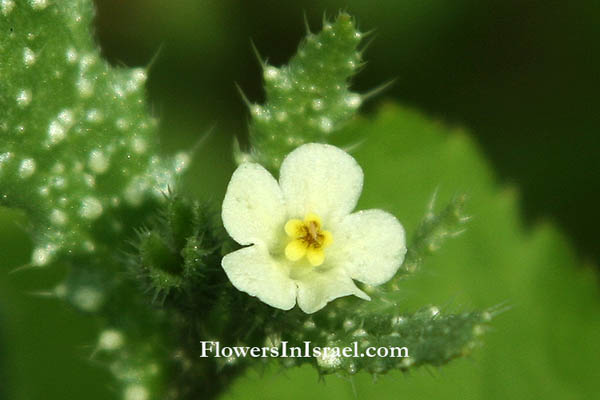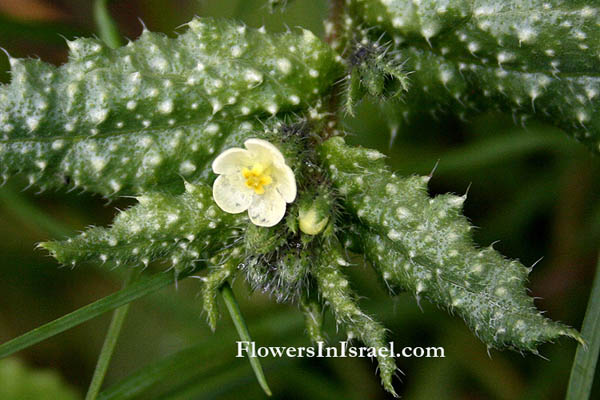Hebrew: לשון-פר מצרית, Arabic: ححمحم مصري
| Scientific name: | Anchusa aegyptiaca (L.) DC. | |
| Common name: | Egyptian Alkanet | |
| Hebrew name: | לשון-פר מצרית | |
| Arabic name: | ححمحم مصري | |
| Family: | Boraginaceae, זיפניים |

|
| Life form: | Therophyte, annual | |
| Stems: | Hispid with stout, tubercle-based hairs; stems 5-30 cm, procumbent or ascending | |
| Leaves: | Alternate, entire, | |
| Flowers: | Yellow or light pink, white | |
| Fruits / pods: | Nutlets 4-5x2-3mm, ovoid, erect | |
| Flowering Period: | February, March, April, May | |
| Habitat: | Batha, Phrygana, Shrub-steppes, Desert | |
| Distribution: | Mediterranean Woodlands and Shrublands, Semi-steppe shrublands, Shrub-steppes, Deserts and extreme deserts, Montane vegetation of Mt. Hermon | |
| Chorotype: | Saharo-Arabian | |
| Summer shedding: | Ephemeral |

Derivation of the botanical name: anchusa, αγχουσα, a plant used for cosmetic as a rouge, perhaps Anchusa tinctoria. aegyptiaca, Egyptian. The Hebrew name: לשון-פר, lashon-par, 'ox-tongue', the leaves have raised spots with short, hooked bristles, giving the leaves a very rough feeling (like an ox’s tongue, hence the name).
|